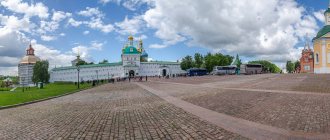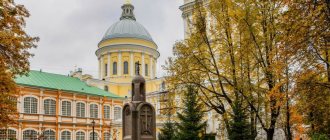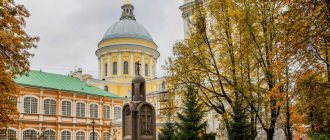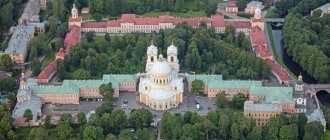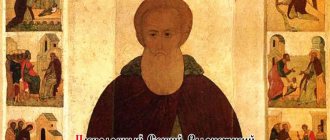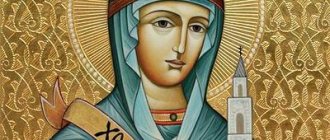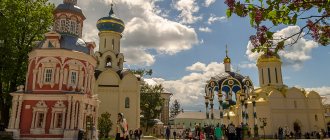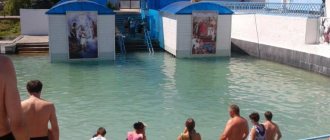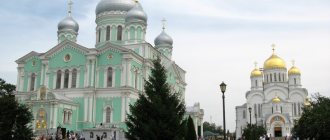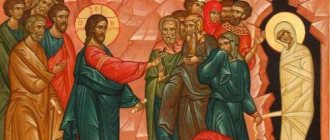Saint Sergius of Radonezh is a hieromonk of the Russian Church, the founder of monasteries, among which is the well-known Trinity-Sergius Lavra. It is not for nothing that this saint is called the defender of the Russian land; he made every effort to unite it to resolutely repel enemy conquerors. The emergence of the spiritual culture of Holy Rus' is associated with his name; he became the founder of the Russian eldership, and monasticism, which was begun by the great ascetics Anthony and Theodosius of the Kiev-Pechersk, was resumed with him. In the 15th century, Sergius of Radonezh was canonized. And before answering the question that worries many about where the relics of Sergius of Radonezh are located, let us first plunge into the life history of this great saint.
Life
The God-bearing Father was born on May 3, 1314 into the pious peasant family of Cyril and Mary (who were also canonized) in Rostov. True, his name was Bartholomew then. The Lord himself chose him to serve people. Pregnant Mary, standing at a service in the temple, suddenly heard the cry of a baby three times from her womb, heard by the people around her and by the priest himself, who immediately realized that a true servant of the Orthodox faith would soon be born.
In his youth, Bartholomew was sent to school, but his weak memory did not give him the opportunity to study well. One day, while walking through an oak grove, he saw an old monk who looked like an angel, and he blessed him for good studies. Bartholomew devoted a lot of time to reading the Holy Scriptures; he wanted to devote his life to God and become a monk, but while his parents were alive, he made a vow to himself.
Soon their whole family moved from Rostov to Radonezh, where after some time the parents reposed before the Lord. In 1337, Bartholomew gave away all his property and, together with his brother Stefan, who was already a monk of the Intercession Monastery, settled on the deserted Makovets hill. The brother soon could not stand the harsh life in the wild wilderness and returned to the brethren.
Bartholomew was left alone, then he was 23 years old. One day Hieromonk Mitrofan came to him, who blessed him to become a monk with the name Sergius.
People in the area quickly learned about the pious monk, and other monks were drawn to him. Together they began to build a small chapel in honor of the Holy Trinity. Then, with God's help, a monastery was built. Smolensk Archimandrite Simon once made a special visit to them and left precious gifts for the brethren to expand the monastery and build a large church.
What to bring from Sergiev Posad as a gift
There are souvenir shops around the Trinity-Sergius Lavra. Here is the largest selection. Can buy:
- colorful headscarves;
- icons and religious literature;
- designer products (boxes, bracelets, egg coasters, etc.);
- religious paraphernalia (crosses, icons, chains, rings with the inscription “God bless me”).
In addition, in Sergiev Posad you will certainly come across shops with wooden toys: nesting dolls, whistles, animal figurines.
You can go to the village of Bogorodskoye. It is located 29 kilometers away. The famous Bogorodsk toys are made there. These are carved figures made of soft wood.
Be sure to try the monastery pastries. It is sold not only in the territories of the monasteries, but also outside them. You will be able to enjoy the pies even if you do not belong to the category of pilgrims.
And, of course, there are a lot of magnets and calendars with views of the city.
Holy Trinity Lavra of Sergius
Since 1355, with the blessing of the Patriarch of Constantinople Philotheus, a cenobitic charter was adopted in the monastery of Father Sergius of Radonezh. Very soon the Holy Trinity Monastery became the center of Moscow lands, supported by the princes. It was here that Sergius of Radonezh blessed Dmitry Donskoy for the Battle of Kulikovo (September 21, 1380).
The Monk Sergius gave his soul to the Lord on September 25, 1392. He had a presentiment of this and gathered the brethren in advance to bless his disciple, the intelligent and experienced Reverend Nikon, for the abbess.
Saint Sergius of Radonezh played a huge role in the unification of Rus'. He did the literally impossible - he reconciled two at that time warring religions. He explained to the Vedic Russians that faith in Jesus Christ has nothing in common with Western Christianity and that Christ did not teach the crusades, the destruction of Vedic idols and the burning of heretics at the stake. He explained to everyone that now there is absolutely no time for hostility when such perverted Christianity is coming from the West. These pseudo-Christians, under the guise of the name of Christ, commit the most heinous crimes. Saint Sergius of Radonezh was a true mourner of the Russian land; he always prayed for Rus', so that its vigilant and accursed enemy would not overcome it.
Temple in the marketplace
At the other end of Sretenka, right next to the Garden Ring, stands the Church of the Life-Giving Trinity in Listy. Why “in Sheets”? The fact is that printers who lived nearby in the 18th century produced ingenuous popular prints using a handicraft method, which, like engravings, were then called sheets. A spontaneous market for these paintings formed near the Trinity Church, with which sellers covered the entire church fence. In 1671, the archers who lived in this place, together with their chief Vasily Pushechnikov, returned from a campaign against Astrakhan, where they subdued the rebellious Cossacks and brought their ataman Stenka Razin to Moscow. As stated in the Scribe Book, Tsar Alexei Mikhailovich “for their service and labor at the same time donated 150 thousand government bricks for the construction of the Trinity Church.” In 1930 the temple was closed and began operating again in 1991.
An important and eventful stage of our pedestrian pilgrimage ends on Sukharevskaya Square. It is better to continue further movement to the north by car - the distance between the temples increases and visiting them requires more patience.
Strong walls of the monastery
The heirs to the royal throne, Vasily III and Ivan the Terrible, were baptized in the famous Holy Trinity Monastery. Soon this monastery turned into a defensive fortress, which was surrounded by stone walls with 12 towers. Ivan the Terrible personally supervised the construction. All this later came in handy when defending against the troops of False Dmitry II.
In 1608-1609, the Sergiev Posad land repulsed a powerful army of thousands of Poles led by governors Sapieha and Lisovsky. Then the Russian governors were Prince G.B. Roshcha-Dolgoruky and nobleman Alexei Golokhvastov. They prayed incessantly and knew that Saint Sergius of Radonezh was always helping them. They kept his relics like the apple of their eye. At the tomb of the holy elder, everyone kissed the cross and swore that they would never leave their monastery alive.
Interesting Facts
There are interesting facts associated with the city. In general, this area is rich in stories and legends. You can get complete information about them on the excursion. We definitely recommend using the services of guides and then exploring the city and its surroundings on your own.
So, let's present the 10 most interesting facts:
- Sergiev Posad is included in the list of the most ancient cities of the Russian Federation.
- The area of the city is 50x50 sq. kilometers. It is twice the size of the Pacific country of Tuvalu.
- This is the only city of the Golden Ring located in the Moscow region.
- The Trinity-Sergius Lavra includes more than fifty architectural objects, and the entire complex is protected by UNESCO.
- It is believed that Sergiev Posad is the birthplace of the Russian nesting doll.
- At one time, N. Gogol, L. Tolstoy, A. Akhmatova, Yu. M. Lermontov came here.
- Ivan the Terrible was baptized in a local church.
- More than 300 thousand pilgrims come to Sergiev Posad every year. At the same time, the Chinese make up more than half of the tourists.
- There are only two laurels in Russia. One of them is located in St. Petersburg.
- The Trinity-Sergius Lavra houses the largest bell on the planet. Its weight is 72 tons.
You will learn even more interesting facts when visiting the city.
Icon of Sergius of Radonezh: what does it help with?
In any church you can always find the image of the Venerable Elder Sergius. His icon conveys to us a deep look, full of humility and wisdom. On May 3/May 16, 2014, a great date was celebrated - the 700th anniversary of the birth of St. Sergius of Radonezh, whom everyone considered a saint during his lifetime. He was respected by various rulers, princes, boyars and ordinary people.
It is not for nothing that many are interested in the question: “What does the icon of Sergius of Radonezh help with?” People turn to the face of the saint with sincere prayer to receive protection and help in unpleasant life circumstances. And parents ask him for their children, so that they study well, are well-mannered and kind, and never fall under someone’s bad influence.
Prayer before Iverskaya and Kazanskaya
You need to go to Red Square from Tverskaya Street through the Resurrection Gate. Here stands the most famous chapel of old and new Moscow - Iverskaya. It was built specifically for the miraculous Iveron Icon of the Mother of God from the Iveron Monastery on Athos. An exact copy of the icon was brought to Moscow on May 19, 1669. According to ancient custom, everyone going to Red Square and the Kremlin always stopped and prayed in front of Iverskaya. At night, the holy icon was transported according to orders from house to house. They were transported in a closed carriage drawn by four horses, accompanied by attendants. A horseman with a torch galloped ahead. When the icon was carried home or taken away during religious processions, a copy was placed in its place - a “substitute”. This copy is now in the Moscow Church of St. Nicholas the Wonderworker in Kuznetsy.
In 1929 the chapel was demolished. Two years later, the Resurrection Gate was also dismantled. The official reason was that they interfered with the entry of heavy equipment into Red Square during various celebrations and parades. The main icon was moved to the Church of the Resurrection in Sokolniki, where it remains in the greatest veneration today.
The Iverskaya Chapel and the Resurrection Gate were restored in the fall of 1995. On October 25, a special plane from Greece delivered a new accurate copy of the miraculous icon from Athos to Moscow. The next day, the icon was transferred in a religious procession to the chapel built for it. Every day from 8 to 20 o'clock continuous prayer services are held here, where all the Moscow clergy serve in turn.
After praying on the path in front of Iverskaya, we go out to Red Square. On the right is the Nikolskaya Tower of the Kremlin. Ahead, the dome-top of St. Basil's Cathedral glows across the square. On the left - you must, of course, go in and light a candle in front of the road - the revived Kazan Cathedral. A wooden temple-monument was built here in 1633 at the expense of Prince Dimitry Pozharsky, the same one whose monument (together with Kuzma Minin) stands in front of St. Basil's Cathedral. From the cathedral to the Execution Place, a smooth wooden pavement was laid through the mud and bustle of the crowded marketplace, called the Red Bridge, and near the temple - Red Square. So Red Square from the word “beauty” means beautiful.
The Kazan Cathedral experienced all the vicissitudes of the 20th century. In 1920 it was captured by the Renovationists - churchmen who agreed to full cooperation with the new government. Demolished in 1936. In 1990, a spontaneous popular desire arose to restore the lost cathedral. In its place was a wooden chapel and a large transparent piggy bank made of thick glass, near which a policeman was on duty. To lower the donation into the crack, you had to climb up to the pedestal using an attached wooden ladder. It’s nice to remember that my little money was in that piggy bank. By 1993, the Kazan Cathedral was restored. About two thousand (!!!about 800!!!) different icons of the Mother of God are known. But Kazanskaya, together with Vladimirskaya, are the most revered of them. In the iconostasis of the cathedral there is a beautiful icon donated by Patriarch Alexy II.
Then both the kings and ordinary Russians, making the sign of the cross and bowing on three sides, walked along what is now Nikolskaya Street. It was built early and was named after the St. Nicholas Monastery that once stood here, in turn named after St. Nicholas the Wonderworker, widely revered in Rus'.
Prayer Book Help
St. Sergius of Radonezh does not leave anyone inconsolable: his relics have the power that is capable of healing. The monks of the monastery described a huge number of cases of miraculous healing.
He makes everyone think about their life and feel whether they are ready to lay down their lives for the Fatherland, as our ancient ancestors did at the prompting of the holy seer?
The real amulet of Russia from its enemies is St. Sergius of Radonezh. The relics, to which hundreds of thousands of pilgrims come, are miraculous and healing.
The holy elder peacefully departed to the Lord on September 25/October 8, 1392. After three decades, the miraculous relics of St. Sergius of Radonezh were majestically discovered, which were always kept in the monastery as long as it was safe.
Many people are interested in the question of how to properly venerate relics. As usual, everyone venerates only the silver ark in which the relics of Holy Father Sergius are kept, where at the level of the head there is a special door, which is sometimes opened, then it is possible to venerate the covered head of the saint.
Schedule of services
The cathedral is open every day from 05:00 to 21:00. Here the Divine Liturgy is held daily (starts at 6:30, with the exception of weekdays during Great Lent - on days of fasting all services are transferred to the Assumption Cathedral, on weekends), an akathist prayer service at the relics of St. Radonezh (held from 05:30 to 20: thirty).
If you want to get into the Serapion Chamber or Nikonov Chapel, then you need to negotiate individually. It is also possible to get into the limit together with an organized tourist group - for this you need to submit an appropriate application.
Weekdays:
| Time | Service |
| 5:30 | prayer service at the saint's shrine. Sergius and the Midnight Office |
| 6:15 | early liturgy |
| 9:30 | late Liturgy |
| 16:45 | evening service |
Friday:
| 17:00 | prayers with akathist to the Virgin Mary | just not during the all-night vigil |
Resurrection:
| Time | Service |
| 5:30 | early liturgy |
| 6:20 | middle liturgy |
| 17:20 | prayers with akathist to St. Sergius |
| 17:20 | all-night vigil |
The Trinity Cathedral of the Trinity of Sergius Monastery regularly conducts excursions and is a popular destination among pilgrims and tourists from all over the world. Despite the busy schedule of services, the monastery always welcomes guests.
Article design: Vladimir the Great
History of the relics
I would like to supplement the topic “Sergius of Radonezh: relics” with one amazing story from the grandson of the priest Pavel Florensky. On Lazarus Saturday before Easter 1919, the opening of the relics of the saint by the Soviet authorities was supposed to take place. The safe preservation of the relics was called into question. Father Pavel found out about this and arranged a secret meeting with the governor of the monastery, Father Kronid, Count Yu. A. Olsufiev (member of the commission for the protection of monuments), S. P. Mansurov and M. V. Shik, who then became priests. They secretly came to the Trinity Cathedral, read a prayer in front of the shrine containing the relics of the saint, then, using a spear, separated the head of the saint and replaced it with the head of Prince Trubetskoy, who had once been buried in the Lavra. The head of Saint Sergius was temporarily left to be kept in the sacristy. Count Olsufiev then placed the head of the saint in an oak ark and began to keep it at home (Sergiev Posad, Valovaya Street). In 1928, fearing arrest, he buried the ark in his garden.
City museums
If you visit Sergiev Posad on your own, don't miss out on the unusual Toy Museum. Its exhibition includes more than 150 thousand of a wide variety of items created by craftsmen for the enjoyment of children. There are toys from both foreign and domestic masters. Sergiev Posad is even known in the world as the “Capital of the Kingdom of Toys”. Therefore, you can take children on the trip too. They won't be bored.
Legend has it that toys were made on the territory of the Trinity-Sergius Lavra 200 years ago. Local residents sold them to pilgrims who arrived to visit the monastery.
Be sure to check out the Museum of Soviet Childhood. Here are collected toys and board games that replaced gadgets for children in the last century. Adults speak highly of the visit. They claim that it is as if they were momentarily transported back to their childhood.
Visit the Sergiev Posad Museum-Reserve. It was founded 100 years ago, and its fund includes over 100 thousand storage units. There are icons, silver utensils, religious objects, and paintings by famous painters.
The Horse Yard is popular. This is also a museum. Previously, the building housed a stable. Now there are several regular exhibitions within the walls of the Horse Yard. One of them is dedicated to the Russian nesting doll. Other exhibitions tell about life in the Russian village and about applied art. Real masterpieces created by the hands of folk craftsmen are exhibited here.
The Museum of Peasant Life "Once Upon a Time" belongs to V. Bagrov. A local artist has put together a unique collection. You can admire homespun clothes made in the last century, clay and wooden household items, kitchen utensils, and a collection of semi-precious stones.
In the house of Pavel Florensky, who is called the Russian Leonardo de Vinci, the furnishings that existed during the life of the priest, scientist, and painter have been preserved. There is a piano here. The brilliant inventor made it with his own hands. He was shot by the Bolsheviks. You can walk around Sergiev Posad all day and discover more and more new sights. We have listed only the most popular among tourists, but the list of religious monuments, museums, and exhibitions does not end there.
Successful operation
In 1933, after Pavel’s father was arrested, Olsufiev fled to Nizhny Novgorod, where he told this story to Pavel Aleksandrovich Golubtsov (the future Bishop Sergius - Bishop of Novgorod), who soon managed to take the ark from the count’s garden and move it to Nikolo-Ugreshsky, Moscow Region monastery. There the ark was kept until the end of the Great Patriotic War. Returning from the war, Golubtsov gave the ark with the shrine to Olsufiev’s adopted daughter E.P. Vasilchikova, who secretly gave the honorable head of St. Sergius to Patriarch Alexy I in 1946. And he blessed it to be returned to the Trinity-Sergius Lavra when it reopened.
General information
The city near Moscow has become a point of attraction for pilgrims. The amazing history of Sergiev Posad has opened up enormous opportunities for the development of the tourism sector.
The city is located 70 kilometers from the capital. About 100 thousand inhabitants live here. Sergiev Posad captivates travelers with its peaceful atmosphere. Here you can gain strength, cheer up, and make the right decision.
Here is the pearl of Russian Orthodoxy - the Holy Trinity Lavra of St. Sergius complex. But even if you bypass the monastery, there are many other, no less interesting attractions.
Every Russian should visit here at least once and touch the secret that these holy lands keep.
The old road is more interesting
Near Pushkino the highway splits into two. To the left is the old road, to the right is the new one. The new one is faster (that’s why it was built), the old one is more interesting. The problem is that when the old highway connects with the new one, due to the mixed traffic, you will have to backtrack a little before turning to the other side of the highway. The hook for such a case is not particularly great. I advise you to boldly turn onto the old road, since it is unknown whether you will be in the mood for it on the way back.
At the fork there is a five-domed St. Nicholas Church on a hill: white walls, blue domes. Consecrated on June 17, 1694. A little further (along the old road) is Novaya Derevnya, and in it there is a wooden, very cozy Sretensky Church. The famous priest Alexander Men served here for more than 20 years. This is where he is buried: on September 9, 1990, he was killed near the Semkhoz station (it’s ahead of Posad on our road). The murder has never been solved. The Sretenskaya Church is blocked from the highway by a large baptismal church, built with donations from admirers of Father Me.
Next - Brotherhood. Since 1623, there was a royal traveling palace here. At the beginning of the 19th century. Due to its disrepair, it was dismantled, and the stone taken from the foundation was used for the construction of the Annunciation Church (1815). This place is historical for Russia and the Orthodox Church: in 1613, the Moscow clergy and boyars met here the young Mikhail Romanov, the first of the royal Romanov dynasty, who “begged for the kingdom.” The future Patriarch Tikhon served here at one time.
I came across messages that Prince Golitsyn, one of the heroes of Ivan Lazhechnikov’s novel “The Ice House” (1835), was buried in the cemetery near the church. I came to the cemetery twice, looking for that grave. I never found it.
Soon the old and new roads repeat the separation trick again, and again we continue our journey along the old highway. Ahead of us is Talitsy. At the end of the last millennium, when I tapped my staff on this path, there stood an old dilapidated chapel - the former courtyard of the Stefano-Makhrishchi Monastery. The chapel had just been vacated by the four families who lived there, so it looked appropriate.
By 2002, the stone chapel was completely restored and consecrated in honor of the New Martyrs and Confessors of Russia. Regular services began at the courtyard. In 2007, local caves began to be restored, and three years later the cave temple was consecrated in honor of the Great Martyr Demetrius of Thessalonica. In 2009, construction began on the courtyard of a new church in honor of the Nativity of the Blessed Virgin Mary.
To the blue Vladimirskaya in Mytishchi
It is impossible to drive past Mytishchi by chance. Right next to the highway there is a tall blue beauty - the Church of the Vladimir Icon of the Mother of God. Mytishchi got its name from the customs house that stood here. In the old days, a toll, a trade duty, was collected from everyone driving along the road or sailing along the then navigable Yauza. The Vladimir Icon is the most revered image of the Mother of God in Russia. According to legend, it was written by the Apostle Luke, an evangelist and witness to the earthly life of Jesus Christ. The Vladimir Church was built in 1713. In 1832, the northern Sergievsky chapel was added, and in 1899, the southern Nikolsky chapel. The tall bell tower of the Mytishchi church was demolished in the first year of war as a dangerous landmark near an important railway station. Restored in 1999. According to the old Orthodox tradition, the church operates a free canteen for the poor. If you stop by, they will feed you too.
The next large city on our way is Pushkino. From Moscow – 43 km. Its name is often associated with the name of the classic of Russian poetry, but the “village of Pushkino” has been known since the end of the 15th century.
Current state
The Peter and Paul Shrine is gradually being revived; now the architecture of the temple is represented by a building of a clear, regular shape with low semicircular apses on three sides. The main dome with a cross is made in the form of an onion or a candle, as a symbol of spiritual battle and light given from Heaven.
Arched spans, blue with snow-white trim, give the building a special airiness and lightness. A three-tier bell tower organically completes the temple complex in addition to the refectory built on the side of the central church. The church decor is dominated by notes of classicism, but baroque can be traced in some elements.
The northern and southern entrances are decorated with porticoes and are decorated with pediments. Niches and protruding cornices are decorated with sandriks. The interior decoration delights with the beauty of the iconostases and drawings on the walls.
Patronal holiday
Every year on July 12, thousands of citizens and guests gather for a solemn Liturgy in honor of the memory of the Holy Apostles Peter and Paul.
Divine service in the Peter and Paul Church
Where to stay
Voznesenskaya Hotel
Cost of living: for the bottom bunk - 500 rubles, for the top bunk - 450 rubles.
Note:
next to the Lavra (approx. 200 m) and near the refectory. Facilities on the floor. Reservations must be made a month and a half before your planned arrival (phone numbers: +7-916-641-69-09).
Old hotel
Address: Sergiev Posad, Red Army Avenue, 133
You need to determine the cost of living yourself. Phone numbers for inquiries: +7(496)549-90-00,.
Note:
comfortable single, double and multi-bed rooms with all amenities. Each room has an icon and Holy Scripture. It is possible to arrange additional space. Children under 7 years old stay free.
Smoking and drinking alcohol in rooms are not allowed in hotels.
Refectory Church
Recommend a place
8
1
The refectory church is located in the place where Tsarina’s mansions were previously located. The church building was built in 1686. It consists of brick and white stone. The building of the Refectory Church has an original roof, which is reliably supported by metal rods. It amazes with its decorative decoration.
Along the perimeter of the facade of the Refectory Church there are semi-columns with “curly” capitals. Above them is a multi-profile cornice. The windows are framed by twisted white stone columns. There are huge sculptural sinks on the walls. The building has two wide staircases. On the eastern side, the St. Sergius Church adjoins the Refectory building.
The hall of the Refectory Church, which is 70 meters long and fifteen meters wide, was intended for holding ceremonial receptions. It is decorated with stucco and paintings made by eighteenth-century craftsmen. The monks dined in another hall - the small refectory. By the way, the building was restored in the 1940s.
